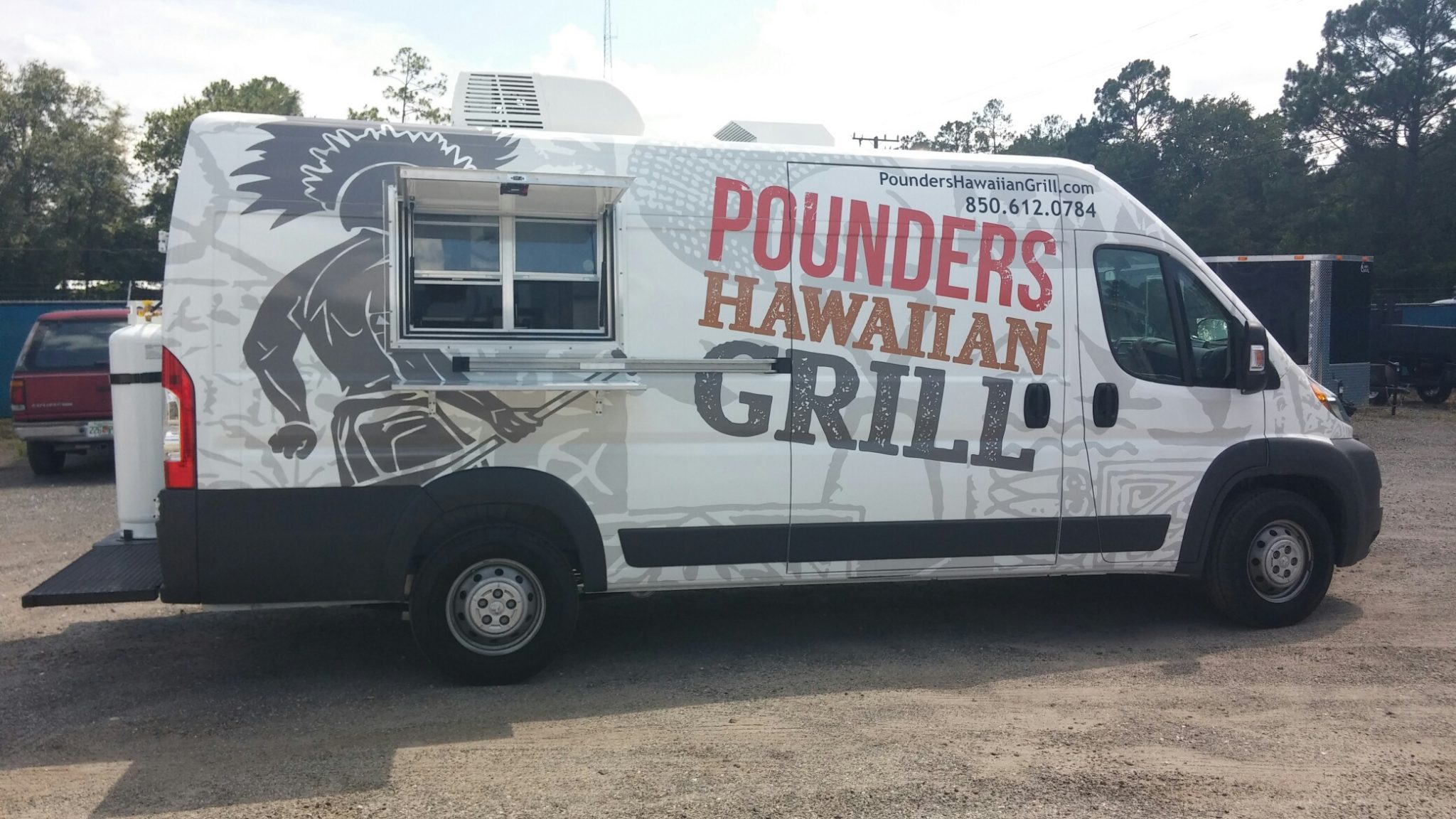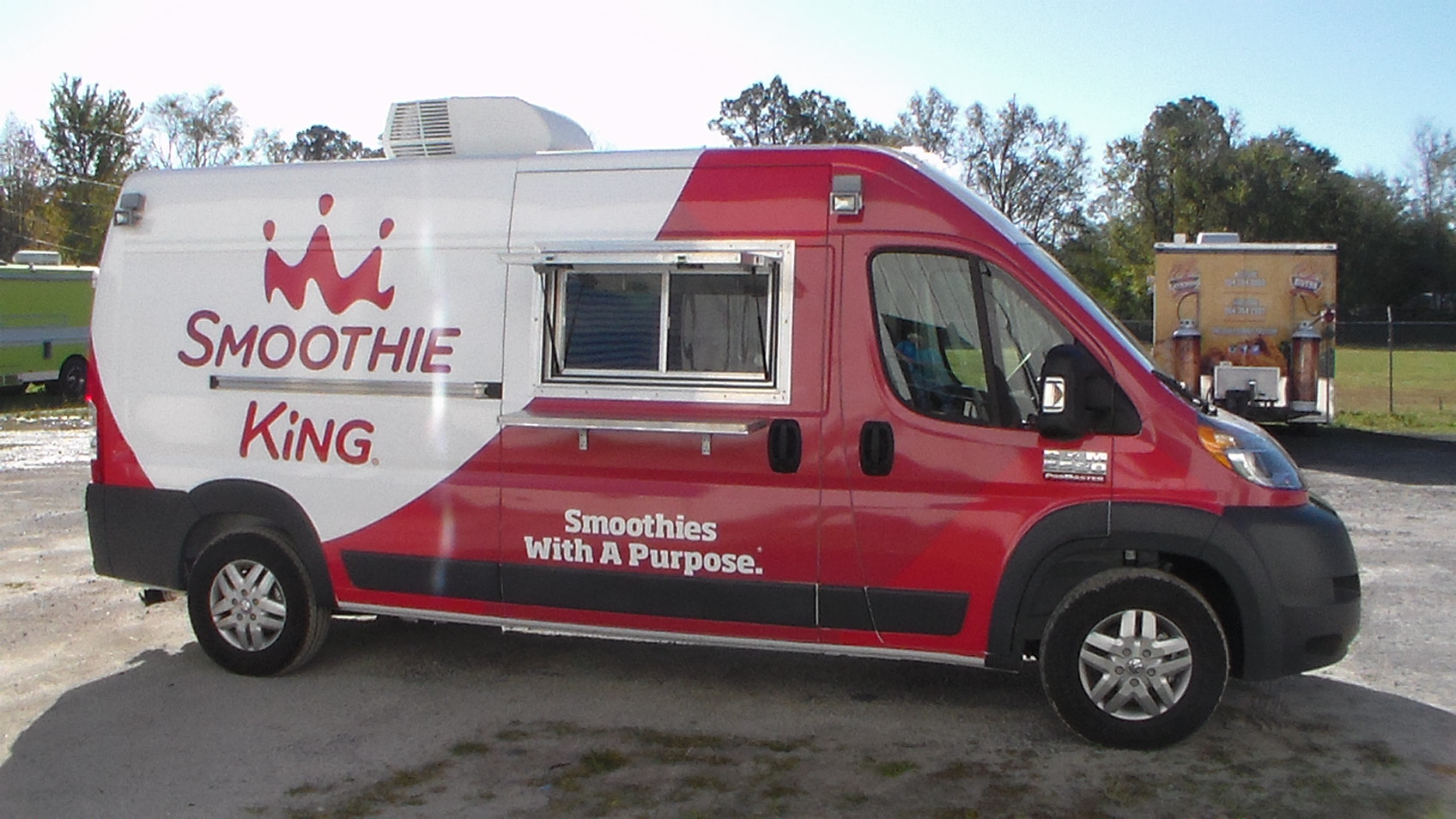Consumer preferences are constantly changing. Fortunately changes in behavior and taste happen gradually over a period of years so if you’re paying attention, you can adapt. Here are four specific food trends that will almost certainly play a bigger role in food trucks businesses in 2020. Even if you’ve got a winning formula already, we recommend choosing one of the following trends to test out in your business. You never know which of these trends will positively impact your bottom line.

Built by M&R Specialty Trailers and Trucks
Animal-Free Meats
Animal-free protein has been one of the biggest stories of 2019. Almost every major fast-food chain now has some type of plant-based meat substitute on the menu. And if this is a direction all the major restaurants are rushing toward, you’ve better believe they’ve got sales and research data behind these initiatives.
You probably seen advertising for products like the “Impossible Whopper” at Burger King, a plant-based burger. Taco Bell and Del Taco chains launched similar products into the market this year as well. According to industry reports, the plant-based retail market in the United States is $5.4 billion annually with 5X growth expected in the coming years.
We recognize that if you’re operating a successful BBQ truck, you’re not going meatless anytime soon. But that doesn’t mean you should be testing out a vegetarian burger option. Even carnivore-loving customers may want to go meatless on certain days or may have a friend with a vegan diet. If you want to maximize revenue this is something worth evaluating.
Clean Label Food
Have you noticed a change in food labels over the past 5 years? A half decade ago if you, most people had never heard of the Paleo diet much less know how to pronounce it. Today, you can find Paleo certified labels on everything from eggs to milk, fruit, coffee, and vegetable products.
Take a look at just about a box of cereal in the grocery store. Odds are it will be making claims of being clean or healthy in some way. One example is the outside of the Lucky Charms box says it’s a breakfast rich in vitamins and minerals. Sure. There’s some level of nutritional value in the refined grains that make up the cereal. But there’s about 11 g of sugar representing 19% – 43% of the recommended daily limit.
As a food truck owner, you don’t have the same label requirements of someone hoping to sell on store shelves. Still you should keep in mind that the average consumer thinks a lot more about where their food comes from today, compared to 15 years ago. If possible find ways to include some healthy and responsibly sourced ingredients into your menu. You could even highlight these ingredients on your menu. This is a great way to differentiate your concession trailer and generate more sales.
Regional Flavors and Ingredients

Smoothie King Van Built by M&R Specialty Trailers and Trucks.
The movement from mass production to local has been rapid over the past decade. Having a product that’s made “locally” assumes better quality and ingredients. As a food truck vendor, you’ve already got the advantage of being a small, local food maker so be sure to play that up. People love to feel like they’re in on a secret by eating your unique food.
To take it a step further, try to find regional flavors that you could test on your food truck, even if it’s only for a limited time. If you’re from Minnesota, try serving a hot dish that represents your food. If you’re on the coast of Maine, pick some type of seafood to incorporate into dishes. You don’t need to look far to find ingredients that can make difference in your bottom line.
Innovative Flavor Combinations
Finally, customers are always looking for new and innovative flavors to taste. There’s a bit of an art and a science to creating something interesting people will want to try, without getting too far out there. Here’s a simple approach that you can use to ensure an item on your menu is truly unique.
Take something basic you sell. It could be a burger or a slice of pizza. Now, rethink this food item if it were in another country like Mexico or Thailand, or Japan. What ingredients would be used? What spices? What would it taste like? By merging the familiar with something different you can come across some truly fantastic flavors.
Consumer tastes will always continue to evolve, but that’s part of the fun of the food business. Let us know if you plan to try anything new with your menu in 2020 by leaving a message on our Facebook page.
